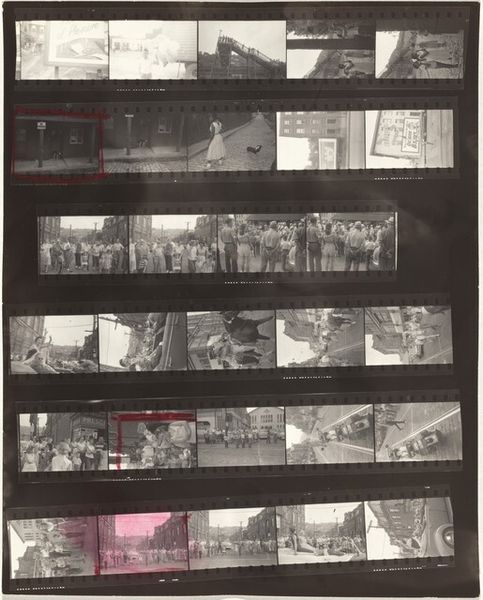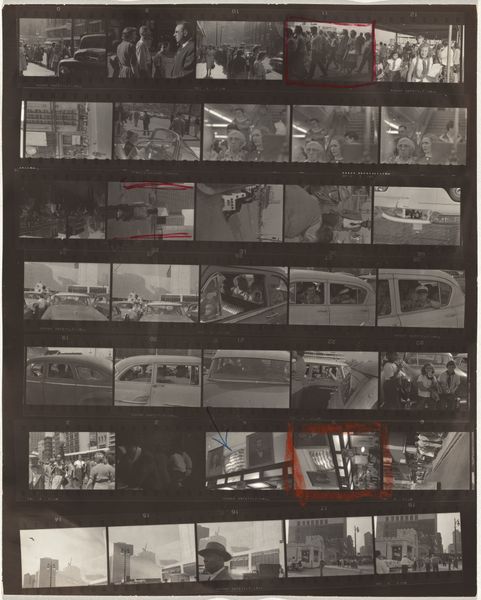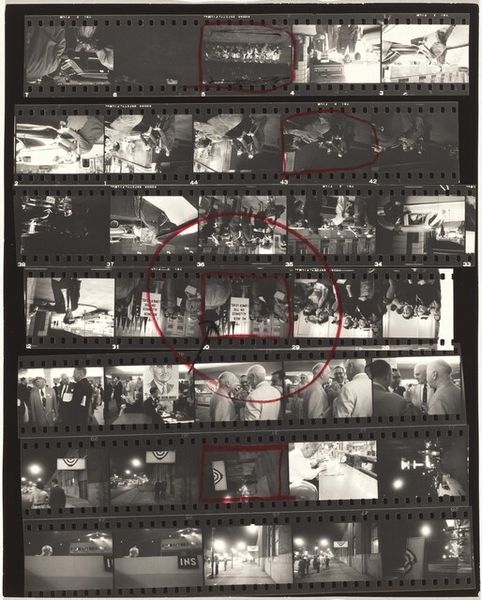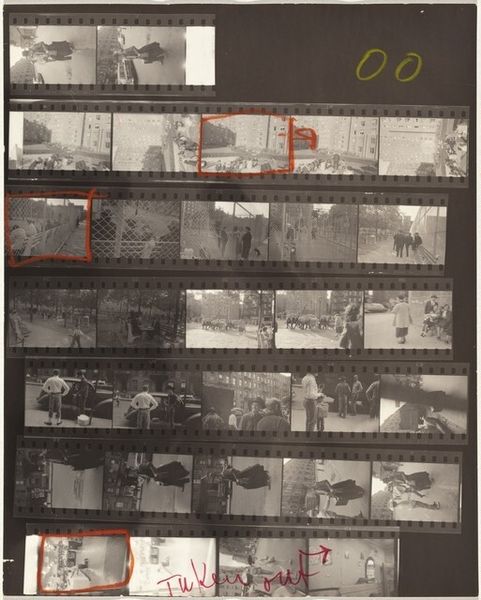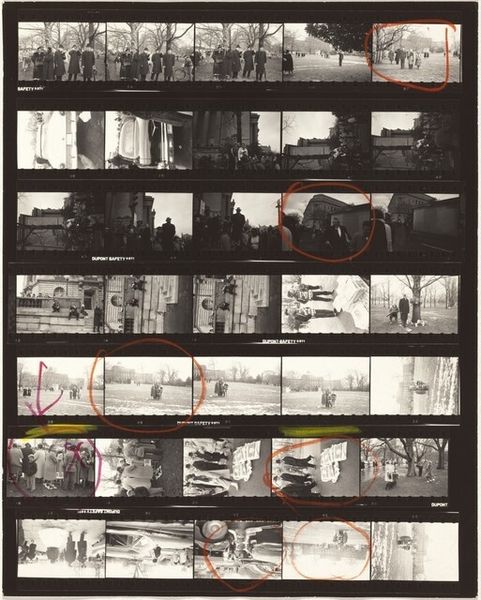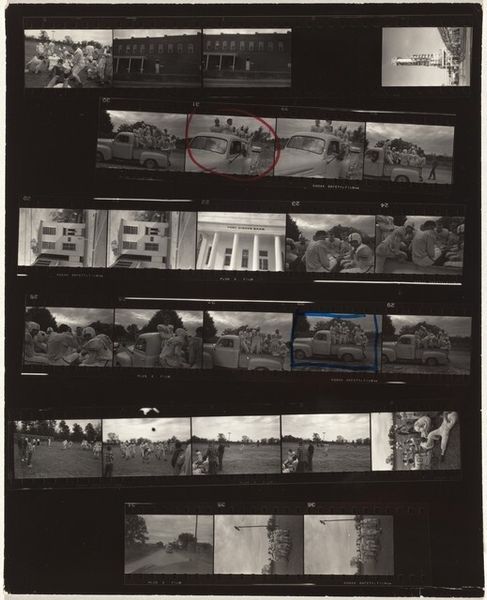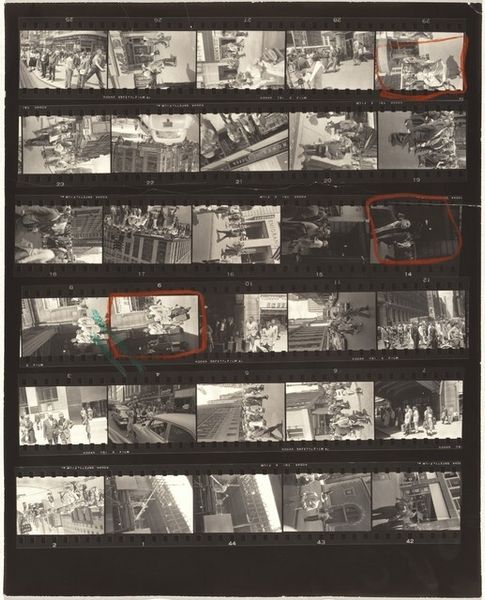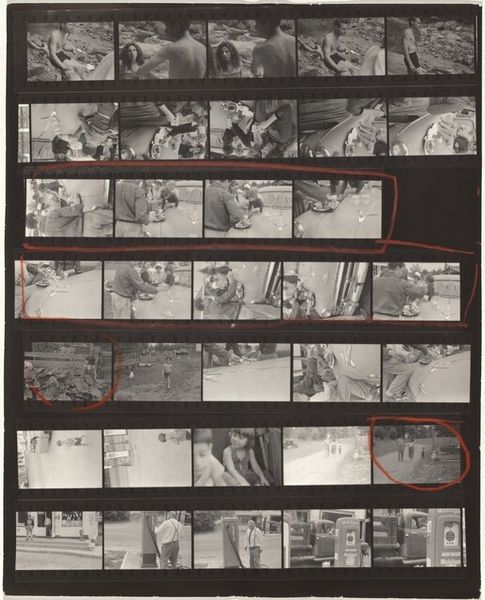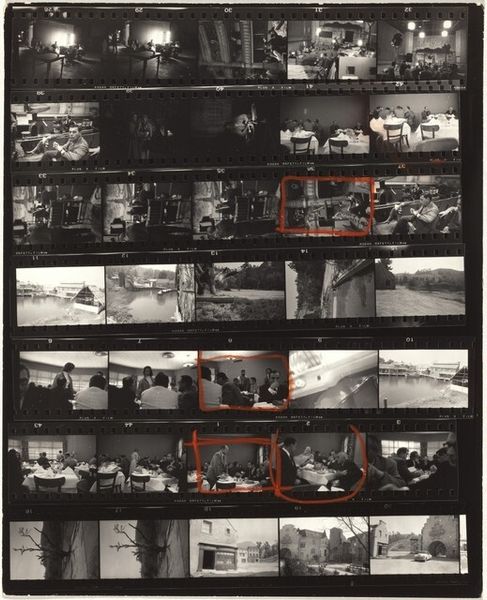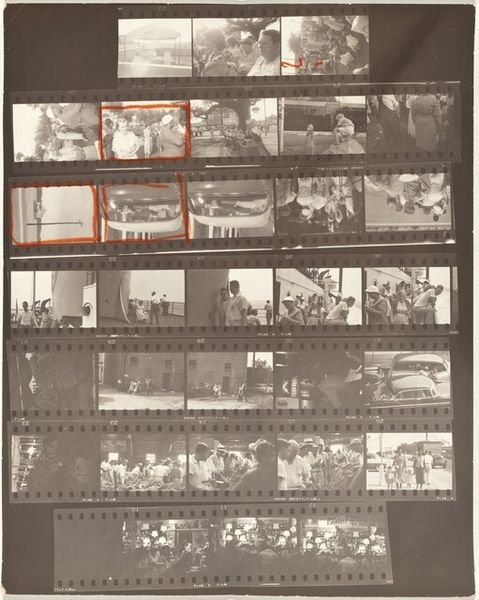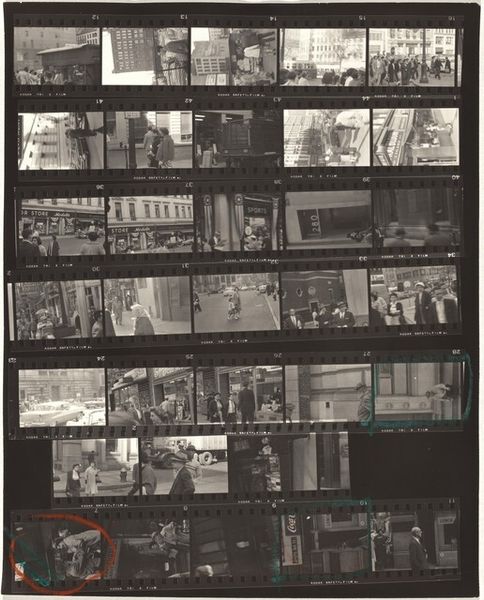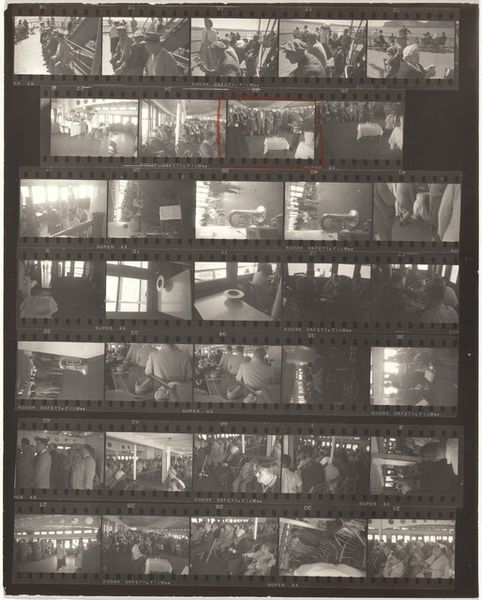
contact-print, photography
#
landscape
#
contact-print
#
street-photography
#
photography
#
pop-art
#
modernism
Dimensions: overall: 25.2 x 20.3 cm (9 15/16 x 8 in.)
Copyright: National Gallery of Art: CC0 1.0
Curator: Robert Frank's "Guggenheim 108/Hoboken 5--New Jersey," created in 1955, offers an intriguing look into the photographer's working process through the medium of a contact print. Editor: The print’s arrangement immediately grabs your attention; it looks almost like a storyboard for a film that was never shot. The multiple strips present this incredible fragmentation of perspective and events that unfold across a town in New Jersey. Curator: Exactly. Note how the arrangement challenges conventional composition. It's not just a photograph, but a meta-narrative on photography itself. The use of the contact print, a functional piece in photographic production, becomes the art. Editor: I’d also add that you get the strong sense of post-war America. Look at the parade imagery—those American flags, the somewhat stiff patriotic display contrasts sharply with Frank’s signature grit. He’s showing us the real world poking through the idealized version. Curator: Precisely. Consider also the tonality, the blacks are deep, creating stark contrast and flattening the image, highlighting the abstract forms within each frame. Look at the selection mark with the orange pen - it looks a bit violent and invasive. It highlights a level of editing and intentional choices within the process that has been brought to light. Editor: I interpret it more like pointing towards certain events happening socially and politically at the time. Think about it: in 1955, America was amidst the Cold War, anxieties about national identity and cultural norms were rife. The cross over one section feels like it directly undermines this very performative patriotism, highlighting social fractures simmering beneath the surface of this organized display. Curator: I think it is fascinating how these selections provide a study of semiotics, with forms, gestures, and moments repeated and rejected in patterns to construct a language specific to the photographer's critical view. There's no traditional vanishing point to lure you, instead it's a labyrinth of photographic possibilities, rejecting conventional artistic expression. Editor: The photograph's raw quality creates a visceral, almost confrontational, viewing experience. It begs us to consider who benefits from such patriotic displays, and perhaps more importantly, who is excluded. Curator: Reflecting on its formalism, the rough and unpolished look, its use of line, tone and form all lead to deeper thoughts about the history it embodies. Editor: Right, its refusal to conform to standard presentation practices invites us to re-evaluate established forms.
Comments
No comments
Be the first to comment and join the conversation on the ultimate creative platform.

